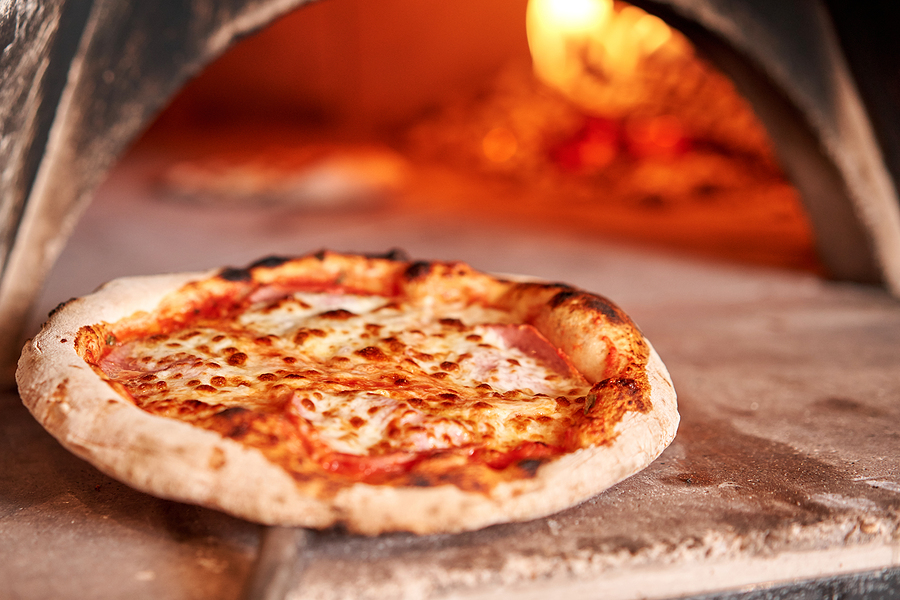Pizza, once a humble dish from Naples, Italy, has transcended its origins to become a global culinary icon. This transformation from a local specialty to a worldwide favorite is a fascinating journey marked by cultural exchange, immigration, adaptation, and commercialization.
In this article, you will learn about italian pizza and how it became a global phenomenon.
1. The Origins of Pizza in Italy

Neapolitan Beginnings
Pizza’s story begins in Naples, Italy, in the late 18th century. Initially, pizza was a simple street food for the poor, made with readily available ingredients: flour, water, yeast, salt, olive oil, tomatoes, and cheese. The Margherita pizza, named after Queen Margherita of Savoy, is one of the earliest recorded versions, featuring tomatoes, mozzarella, and basil to represent the colors of the Italian flag.
Local Popularity
Pizza’s popularity in Naples grew due to its affordability and delicious taste. It was sold in open-air stands and pizzerias, quickly becoming a staple food for Neapolitans. The simplicity and versatility of pizza allowed for various toppings and styles, catering to different tastes and preferences.
2. The Journey to America

Italian Immigration
The late 19th and early 20th centuries saw a significant wave of Italian immigration to the United States. Many Italians settled in cities like New York, Chicago, and San Francisco, bringing their culinary traditions with them. Among these traditions was pizza, which began to gain popularity beyond the Italian immigrant community.
The First Pizzerias
Lombardi’s, the country’s first pizza restaurant, debuted in New York City in 1905. This establishment marked the beginning of pizza’s journey into mainstream American culture. As more pizzerias opened, pizza started to appeal to a broader audience, including non-Italians.
3. Post-War Popularization

World War II Influence
World War II played a crucial role in spreading the popularity of pizza. American soldiers stationed in Italy developed a taste for pizza and brought their newfound appreciation back home. This post-war period saw an explosion in the number of pizzerias across the United States.
Media and Pop Culture
Pizza’s rise to fame was further fueled by its portrayal in American media and pop culture. Movies, television shows, and advertisements featured pizza, making it a symbol of fun, convenience, and modernity. This exposure helped solidify pizza’s place in American society.
4. Global Expansion

The Rise of Pizza Chains
The 1950s and 1960s saw the emergence of pizza chains like Pizza Hut (founded in 1958) and Domino’s (founded in 1960). These companies revolutionized the pizza industry with their standardized recipes, fast delivery, and aggressive marketing. Their expansion across the United States and eventually worldwide made pizza accessible to millions.
Adaptation to Local Tastes
As pizza spread globally, it was adapted to suit local tastes and ingredients. In Japan, for example, popular toppings include mayonnaise, corn, and seafood. In India, paneer and tandoori chicken are common. This adaptability has allowed pizza to integrate seamlessly into diverse culinary cultures, furthering its global reach.
5. The Role of Technology and Globalization

Advancements in Food Technology
Advancements in food technology and preservation methods have made it easier to produce and distribute pizza ingredients worldwide. Frozen pizza, a convenience food staple, emerged in the mid-20th century, allowing people to enjoy pizza at home with minimal effort.
Globalization and Cultural Exchange
Globalization has facilitated the exchange of culinary traditions and ideas. Travel, migration, and the internet have made it easier for people to discover and appreciate foods from different cultures. Pizza, with its universal appeal, has benefited immensely from this cultural exchange.
6. The Contemporary Pizza Scene

Gourmet and Artisan Pizzas
Traditional and artisanal pizza have seen a return in popularity in recent years. Pizzerias focusing on high-quality ingredients, authentic techniques, and innovative toppings have gained popularity. This movement has brought pizza back to its roots while simultaneously pushing culinary boundaries.
Fusion and Innovation
Modern chefs and food enthusiasts continue to experiment with pizza, creating fusion dishes that blend different culinary traditions. From sushi pizza to dessert pizza, these innovative creations keep pizza relevant and exciting.
Explore the Journey of Italian Pizza
Italian pizza’s journey from a humble Neapolitan street food to a global culinary phenomenon is a testament to its adaptability, simplicity, and universal appeal. Through waves of immigration, cultural exchange, commercialization, and innovation, pizza has found a place in the hearts and kitchens of people around the world. Its story is a fascinating blend of history, culture, and creativity, reflecting the ever-evolving nature of food and society.





